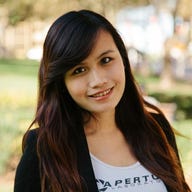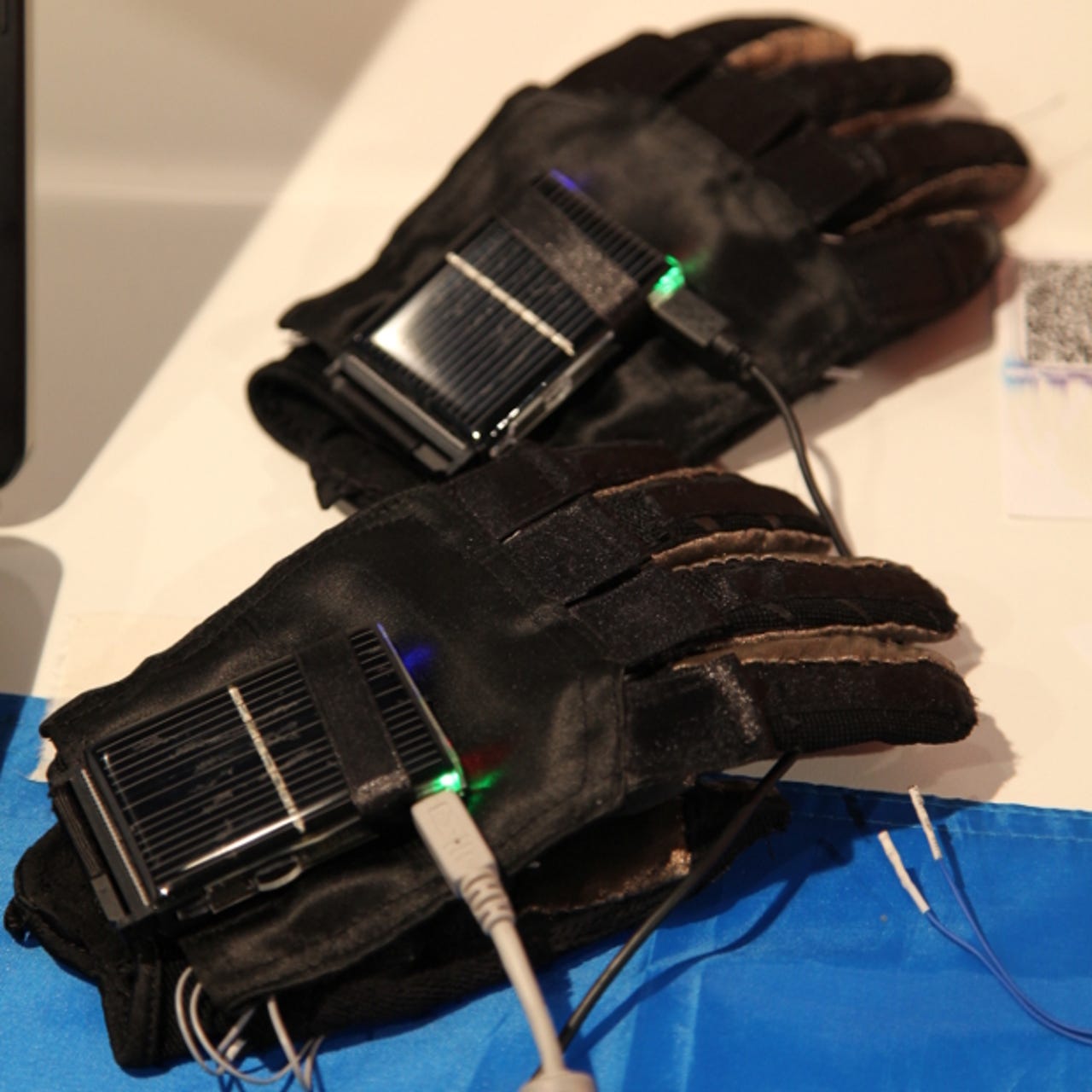Highlights from Microsoft's Imagine Cup 2012
<p>After five gruelling days, Microsoft's Imagine Cup 2012 wrapped up yesterday. Over 100 teams from 75 countries made it to the finals this year, all bringing along inventions intended to solve the world's toughest problems.<br /> </p>


1 of 13 Chris Duckett/ZDNet)Team Quadsquad, from Ukraine, attracted a lot of attention in the showroom with EnableTalk, gloves that can translate sign language to text. The gloves use various sensors , gyroscopes and accelerometers to detect gestures.Clearly, the attention was well deserved; Quadsquad ended up placing first in the Imagine Cup software design category, taking home $25,000.
Quadsquad team Ukraine EnableTalk gloves
2 of 13 Chris Duckett/ZDNet)Second place in this year's competition went to the All Lights! team from Japan.The lights communicate with each other, using light beams and a visual communication protocol that the team developed to figure out if some lights can be dimmed. Inspired by the energy crisis occuring in Japan in the aftermath of its natural and nuclear disasters, the team designed the lights, primarily, to save energy.
Japan takes second place.
3 of 13 Chris Duckett/ZDNet)Taking out third place in the software design category was team wi-Go from Portugal. Inspired by one of the teammates who is wheelchair-bound, wi-Go created a shopping trolley to assist the physically disabled.The wi-Go trolley can follow a person around as they go through a grocery store, thanks to an attached Microsoft Kinect sensor.
Moving shopping trolley.
4 of 13 Chris Ducket/ZDNet)This is Team Dancing Pillow, from Jordan. Their initial inspiration was one of the team member's inability to wake up in the morning, but the invention evolved to one that can assist hearing impaired people in emergencies.The pillow vibrates when triggered, accompanied by a garish flashing light and a device that emits a strong smell to wake the user up in case of a fire, etc.
Dancing pillow.
5 of 13 Chris Duckett/ZDNet)The uCHAMPsys team from Taiwan made it into the finals, showing off their weight loss solution that uses a bespoke circuit board inside of a watch to track user movement, in much the same way that a Fitbit works.Shown above is the third generation of watches that the team has created.
Weight loss solution.
6 of 13 Chris Duckett/ZDNet)The sole Australian finalist this year was StethoCloud, a Windows Phone application and digital stethoscope combination that is intended to help in the diagnosis of pneumonia.
Go Aussies.
7 of 13 Chris Duckett/ZDNet)This Polish entry into the Kinect fun section of the competition involved activities such as bouncing on a ball and raising one's arms to interact with a game. It was built to help children undergoing rehabilitation by physiotherapists.
Bouncing lady.
8 of 13 Chris Duckett/ZDNet)Members of the Cote d'Ivoire and South Korean team mixing it up. The brown costume at the back is intended to be a peanut.
Peanut butter jelly time.
9 of 13 Chris Duckett/ZDNet)A member of the Greek team sporting the headwear used in the team's system, which uses gameplay to help sufferers of Alzheimer's Disease.
Funky headwear for sufferers of Alzheimer's.
10 of 13 Chris Ducket/ZDNet)I'm curious to find out how much food he ended up receiving.
Begging.
11 of 13 Chris Duckett/ZDNet)The Kazakhstani team came up with ArchAngel, a flying and hovering reconnaissance device for use in emergency situations. It was the hit on the show floor.
Spy droid.
12 of 13 Chris Duckett/ZDNet)Because nothing says Australia like a man dressed in a mangy Koala suit.An Imagine Cup contestant poses with the creepy-looking Koala.
Koala Attacks contestant.
13 of 13 Chris Duckett/ZDNet)Congratulations to all the finalists that made it to the Microsoft Imagine Cup 2012.
Congrats.
Related Galleries
Holiday wallpaper for your phone: Christmas, Hanukkah, New Year's, and winter scenes
![Holiday lights in Central Park background]()
Related Galleries
Holiday wallpaper for your phone: Christmas, Hanukkah, New Year's, and winter scenes
21 Photos
Winter backgrounds for your next virtual meeting
![Wooden lodge in pine forest with heavy snow reflection on Lake O'hara at Yoho national park]()
Related Galleries
Winter backgrounds for your next virtual meeting
21 Photos
Holiday backgrounds for Zoom: Christmas cheer, New Year's Eve, Hanukkah and winter scenes
![3D Rendering Christmas interior]()
Related Galleries
Holiday backgrounds for Zoom: Christmas cheer, New Year's Eve, Hanukkah and winter scenes
21 Photos
Hyundai Ioniq 5 and Kia EV6: Electric vehicle extravaganza
![img-8825]()
Related Galleries
Hyundai Ioniq 5 and Kia EV6: Electric vehicle extravaganza
26 Photos
A weekend with Google's Chrome OS Flex
![img-9792-2]()
Related Galleries
A weekend with Google's Chrome OS Flex
22 Photos
Cybersecurity flaws, customer experiences, smartphone losses, and more: ZDNet's research roundup
![shutterstock-1024665187.jpg]()
Related Galleries
Cybersecurity flaws, customer experiences, smartphone losses, and more: ZDNet's research roundup
8 Photos
Inside a fake $20 '16TB external M.2 SSD'
![Full of promises!]()